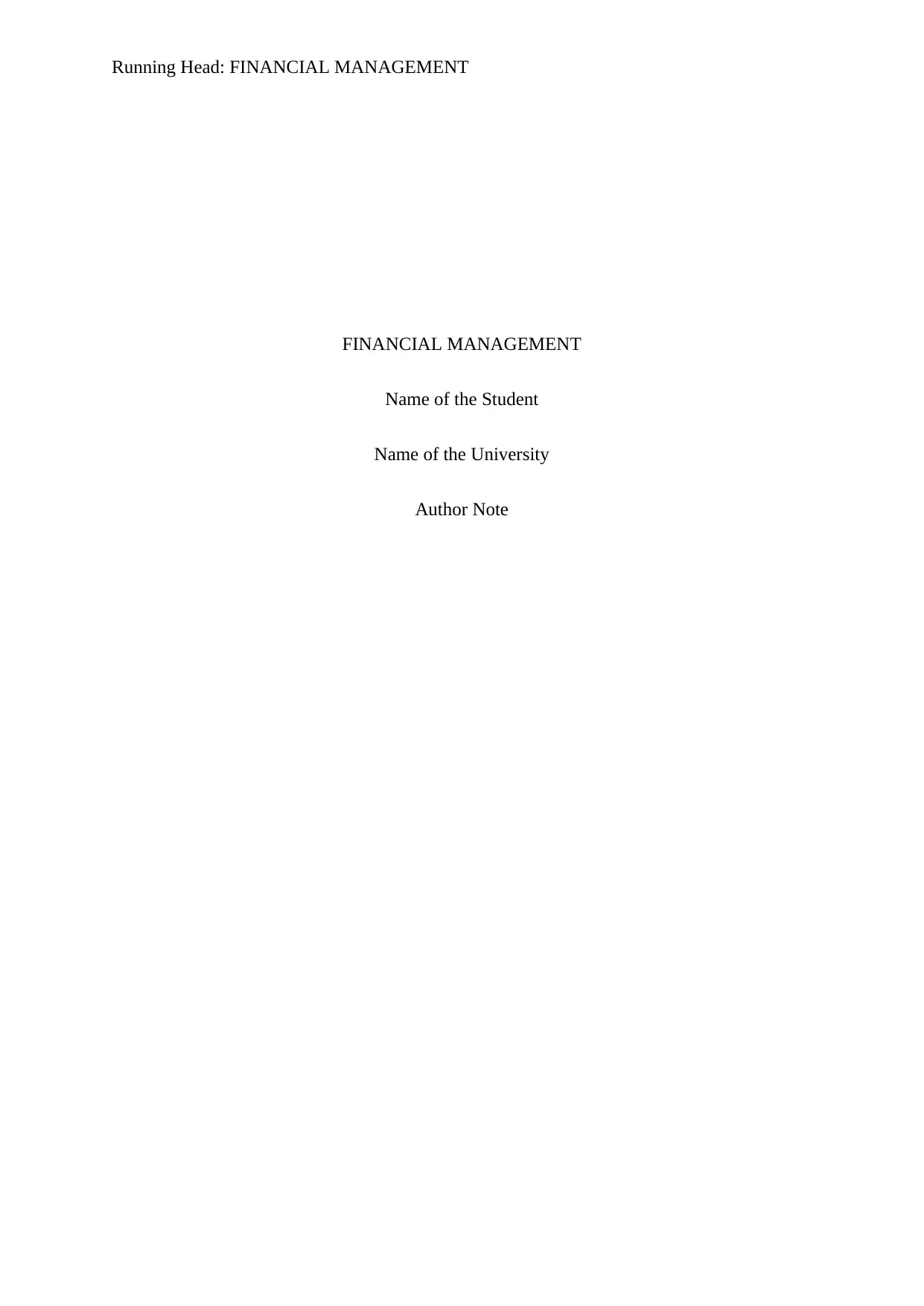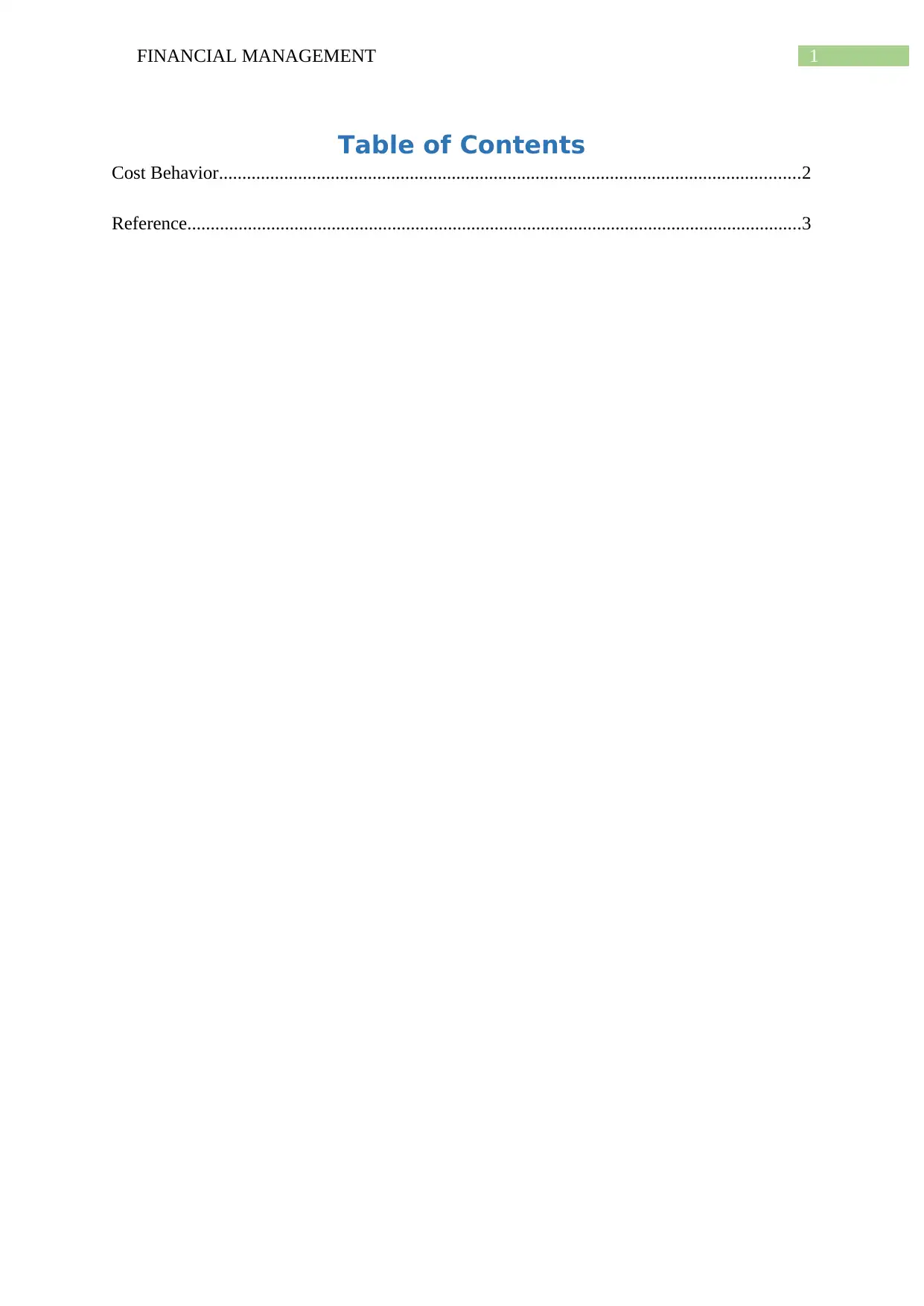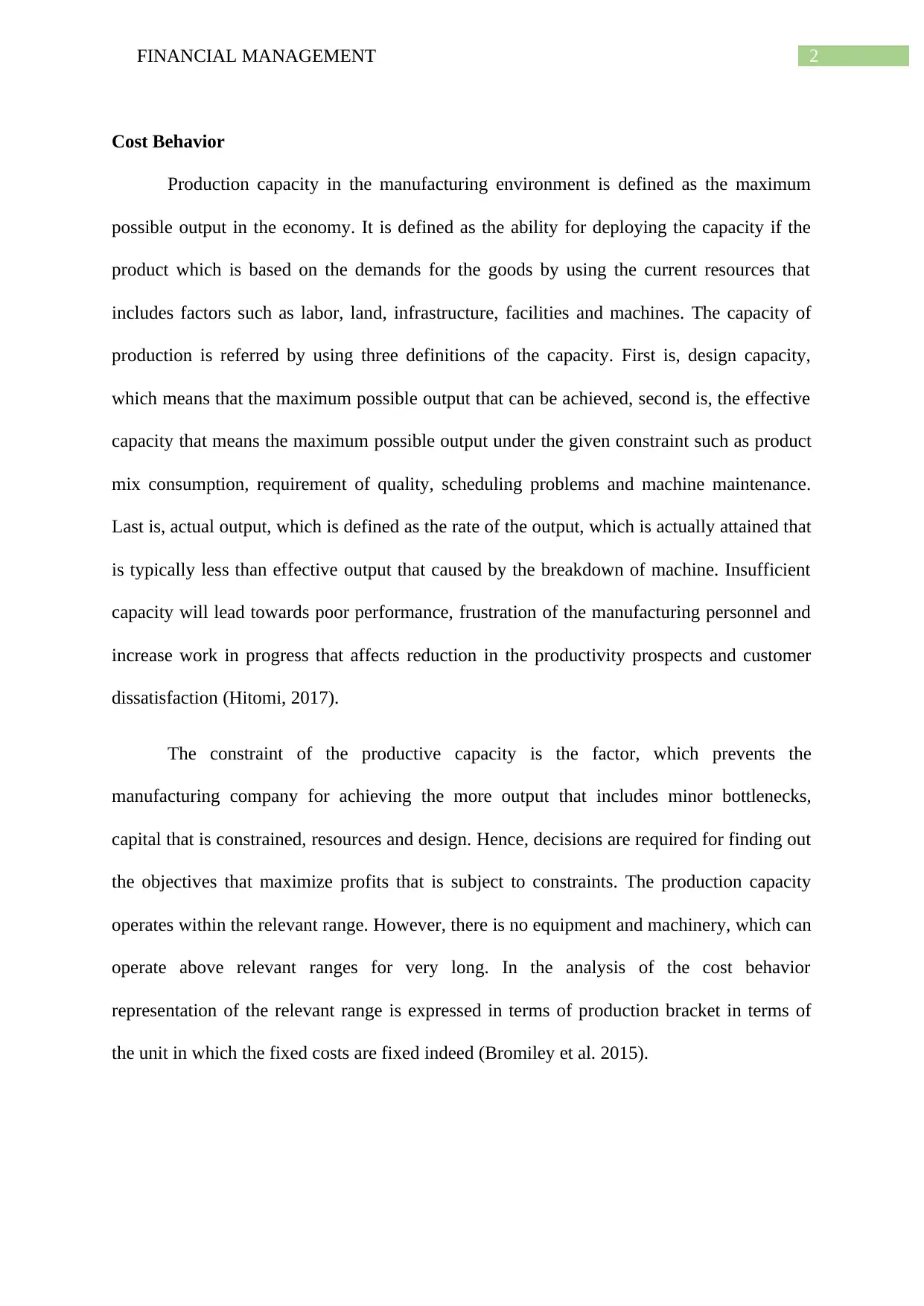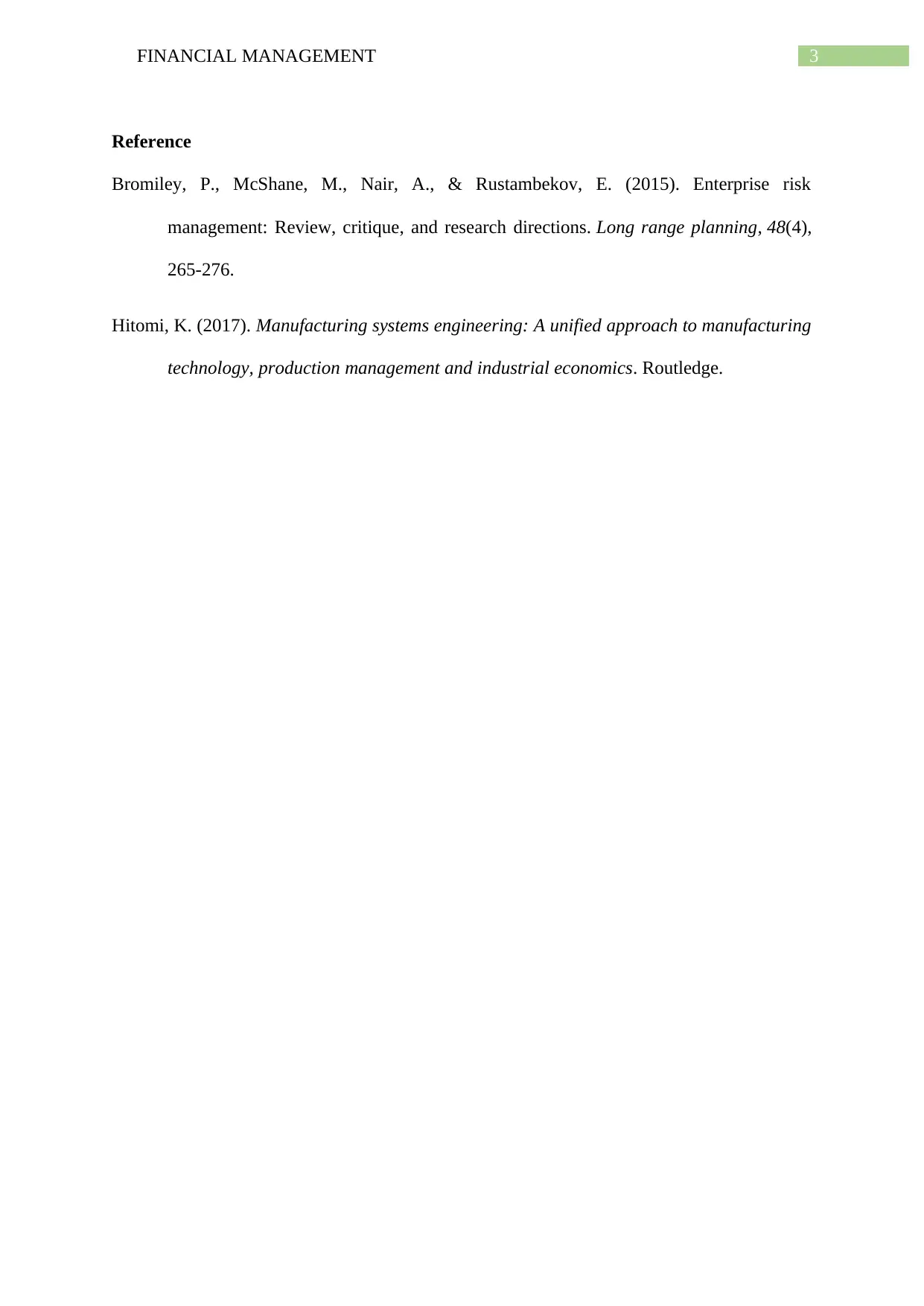Financial Management: Cost Behavior and Production Capacity Analysis
VerifiedAdded on 2023/01/23
|4
|421
|66
Essay
AI Summary
This essay provides an overview of cost behavior within the context of financial management, emphasizing its relationship with production capacity. It defines production capacity in a manufacturing environment as the maximum possible output, influenced by factors like labor, land, and infrastructure. The document distinguishes between design capacity, effective capacity, and actual output, noting that insufficient capacity can lead to poor performance and customer dissatisfaction. It also addresses the constraints on productive capacity, such as bottlenecks and limited capital, and highlights the importance of decision-making to maximize profits under these constraints. The analysis stresses that production capacity operates within a relevant range, and the representation of this range is expressed in terms of production brackets where fixed costs remain constant. The essay concludes by referencing relevant literature on enterprise risk management and manufacturing systems engineering.
1 out of 4










![[object Object]](/_next/static/media/star-bottom.7253800d.svg)